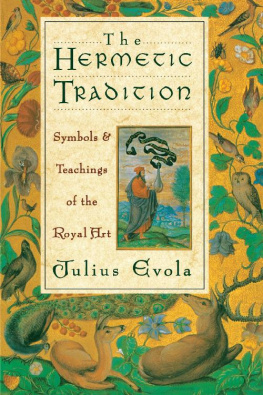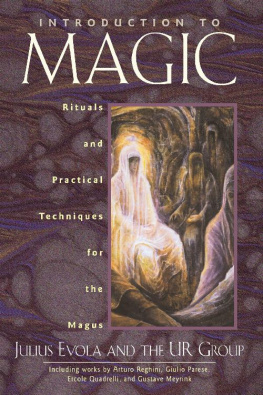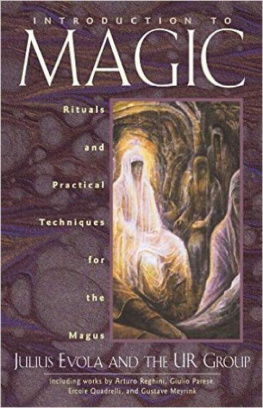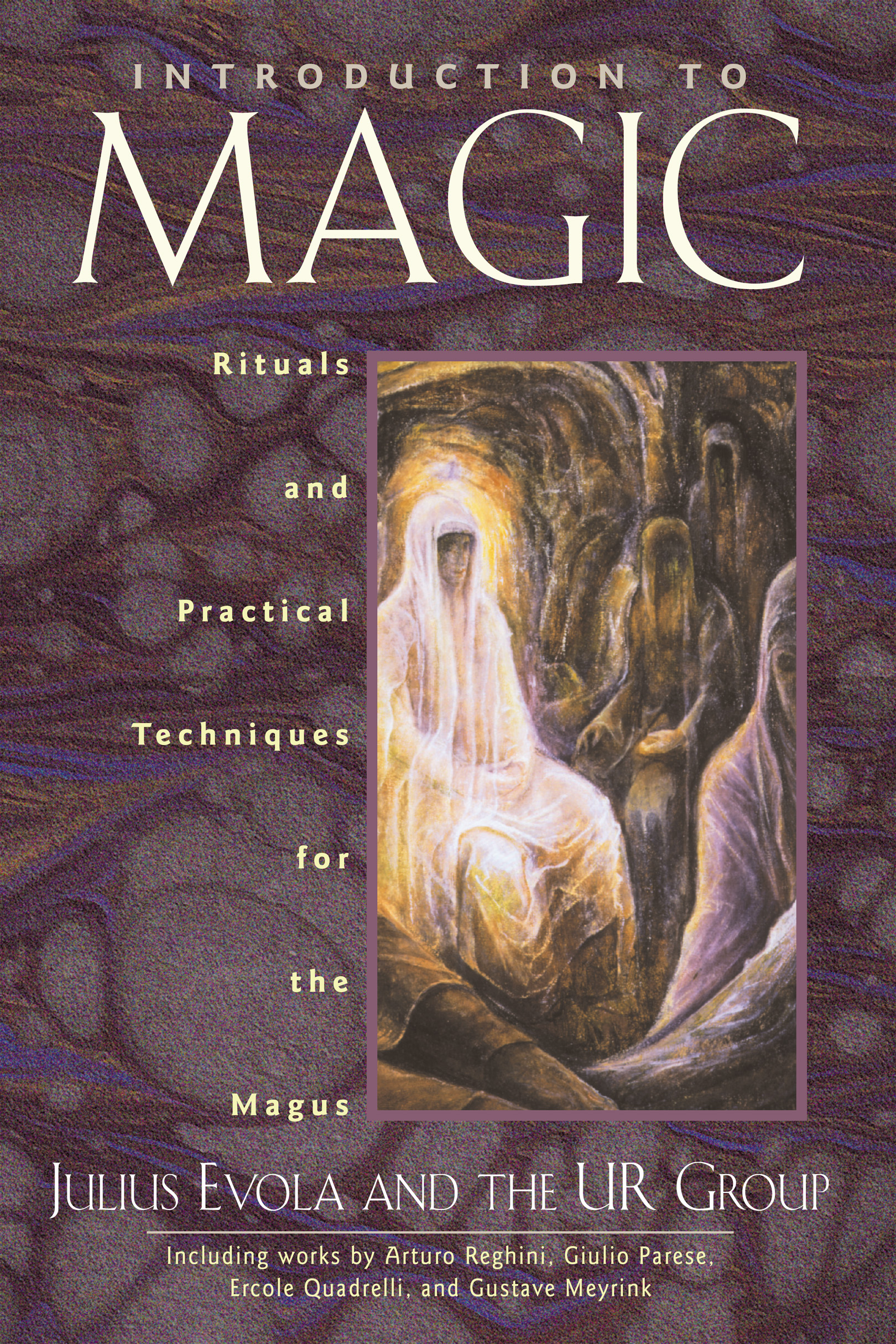
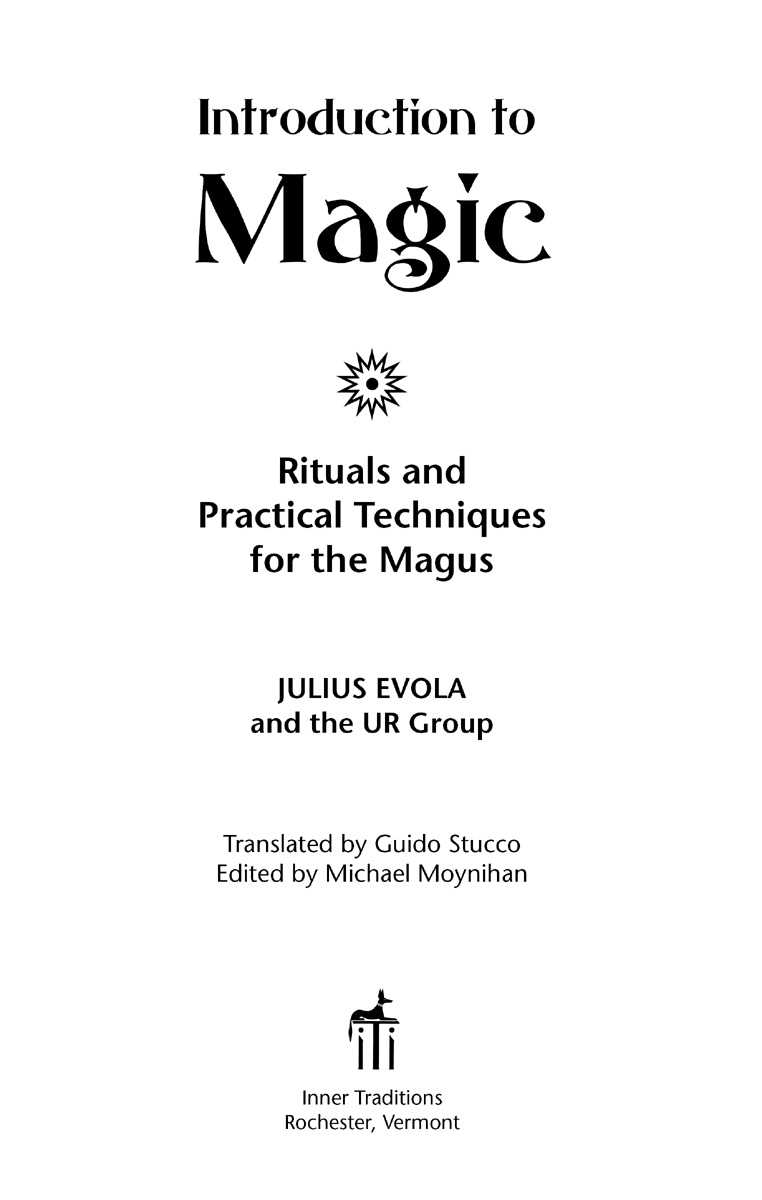
Editors Note

I ntroduction to Magic is a complex book that presented numerous hurdles for both translator and editor. A primary example of this can be seen in the Italian title Introduzione alla Magia quale scienza dellIo (literal translation: Introduction to Magic as a Science of the I). The fundamental theme of the book concerns the training and development of this Io, a term for which it is difficult to find a suitable English equivalent. The word ego is not an appropriate choice, in part due to connotations from modern psychoanalysis. Use of the English first person I as an impersonal noun is awkward, and therefore the best solution was to utilize the term Self, capitalized as a proper noun.
Other obstacles in translation arose from the unusual nature of the books contents. The contributors came from various backgrounds and their individual writing styles reflect this. It would be inappropriate to reduce them to one homogeneous prose; the reader will therefore notice inconsistencies among the authors and articles, especially with regard to unique preferences for capitalization, punctuation, and emphasis. We have generally left these idiosyncrasies intact, in order to convey accurately what the original readers of the journal Ur had in front of them.
When dealing with foreign documents (e.g., the Tantric and Buddhist texts, or the Mithraic Ritual) we have not referred to modern translations of these works, but instead have returned to sources closer to those texts that the UR Group used when preparing their own translations.
We have introduced some clarifications to aid the modern reader. Translations are given for most of the Latin words and phrases, and we have also provided transliterations of ancient Greek terms when this serves to illuminate the authors message (notably in the essay Knowledge of the Symbol by Pietro Negri).
The footnotes throughout the book are either from the author of a given essay or, when indicated, by the UR Group as a whole (although, as Renato Del Ponte points out in his preface, these notes were most likely written by Evola). We have provided some additional footnotes, which are always indicated as Editors notes. The precedent for some of these notes comes from the German edition of Introduction to Magic, edited and translated by Dr. H. T. Hansen, to whom we are indebted for allowing us to draw from his work. A grateful acknowledgment is also given to Joscelyn Godwin, who made an immense amount of contributions toward revising and refining the English translation of Introduction to Magic. The degree to which this edition reflects the subtleties of meaning originally invested into the material by the UR Group is largely due to his input.
A piece of advice offered by Dr. Hansen to German readers of the book is equally valid for the present edition: Although much effort has been expended in making this translation as clear as possible, we recommend that it be read using the ears of the heart, for a certain freedom of the translation was unavoidable.
Preface
Julius Evola and the UR Group
Renato Del Ponte

T he collaboration that Julius Evola sought out at the end of the 1920s with the most interesting figures of Italian esotericism to form the famous UR Group, aside from the example it has provided and continues to provide to anyone seriously engaged in the esoteric sciences, is also extremely important in the overall context of Evolas work. For it was precisely during this period that he came to expand his own interests in the real, time-honored realms of Tradition, and at least two of his principal works, Revolt Against the Modern World and The Hermetic Tradition, are contained in seed-form in some of the monographs published by UR. The attendant experiences with the UR Group should therefore not be neglected, for in order to clarify essential points necessary to a comprehension of the spirit of Evolas lifework, indeed it is necessary to investigate the precedents, limits, and outcomes of their endeavors.
The Preliminaries
The journals Atanr (1924) and Ignis (1925), both edited by Arturo Reghini, can be considered direct antecedents of Ur. During the two brief years of their existence (Ignis enjoyed a fleeting revival in January 1929), these two journals of initiatic studies confronted esoteric themes and disciplines with a scientific rigor and seriousness uncommon to the heterogeneous spiritualistic environment of the era. The themes, which were always of exceptional interest, ranged from Pythagoreanism and Tantrism to the Kabbalah and the secret documents of Cagliostros trial. It was here, in Italy, that the writings of Ren Gunon were first published, including his principal versions of Lsotrisme de Dante (The Esotericism of Dante) and Le roi du monde (The King of the World, translated by Reghini), which only later came out in France in 1925 and 1927, respectively. Among Reghinis contributors we find names that will crop up again in the UR Group: Aniceto Del Massa, Luce (Light, pseudonym of Giulio Parise), and, aside from Reghini himself, Julius Evola.
Apart from some critical reviews, Evola, who was then twenty-six years old, contributed a long essay to Atanr in installments on La potenza come valore metafisico (Power as a Metaphysical Value), which was later incorporated into Luomo come potenza (Man as Power) in 1926.
Apart from his work in the artistic field of the avant-garde, which does not concern us here, by this time Evola had to his credit the powerful Saggi sullidealismo magico (Essays on Magic Idealism, 1925) and countless contributions to spiritualist and philosophical journals of the era, such as Ultra, a publication of the Independent Theosophical League of Rome, edited by Decio Calvari; Bilychnis
In a famous novel by Sibilla Aleramo (18761960), Amo, dunque sono (I Love, Therefore I Am), published by Mondadori in Milan in 1927, we can retrace these circles in some detail. Evola, with whom the author had had a brief and stormy love affair around 1925, appears in her novel as Bruno Tellegra and is depicted, in the wake of their relationship, as a sinister, almost Luciferian figure: Bruno Tellegra was made more to succumb to the charms of a devil rather than an angel, she writes on p. 152. He is inhuman, an icy architect of acrobatic theories, vain, vicious, perverse... is her description of him on p. 148. But the true protagonist of the novel is unquestionably Luciano, that is, Giulio Parise, who would be known as Luce in the future UR Group; he is the hero-lover of the book, which takes place in 1926. He is also possessed by desire, striving and straining to become a magus. On p. 21 we find: It required all your infinite seduction for me not to flee when I found out that you, too, belonged to the sect of the magi. And on p. 50: Luciano, Luciano, and you want to become a magus! Youve told me youve already worked fantastic things, things not only fantastic to speak of, but carried out in truth.
Next page

